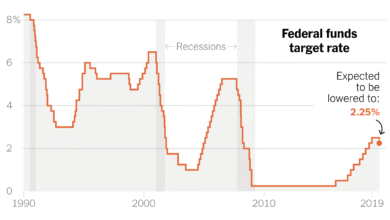Constellation Brands Earnings Hit by Aluminum Tariffs

Constellation Brands earnings report has recently stirred the brewing community as the company’s quarterly results fell short of analysts’ expectations, primarily due to the adverse effects of aluminum tariffs. Despite witnessing a significant dip in profitability, the owner of Modelo remains undeterred, upholding its fiscal 2026 outlook with confidence. Investors were left reeling as the firm experienced revenue losses, with a notable decline in beer demand and revenue attributed to heightened tariffs impacting the cost of key imports. Constellation’s stock has also taken a hit, dropping over 20% this year, fueled by concerns surrounding beer demand and its implications on future performance. As the company navigates through these challenges, analysts will be keenly observing the impact of Modelo beer sales and the broader market dynamics on its recovery trajectory.
The recent financial disclosures from Constellation Brands reflect a challenging landscape for the iconic brewery, known for its celebrated beer labels including Corona and Modelo. As the parent company grapples with disappointing profit figures and a shift in consumer preferences, the broader implications for beer production and trade come into focus. Variables such as escalating aluminum tariffs and shifting market demands have raised questions about future sales and growth expectations. Despite these obstacles, Constellation holds steadfast to its financial prognostications for fiscal 2026, aiming to stabilize its earnings even amid prevailing beer demand concerns. The interplay between these economic factors and the company’s strategic positioning will be crucial in determining its future direction.
Constellation Brands Earnings Fall Short Amid Tariff Challenges
In the latest quarterly report, Constellation Brands reported earnings that missed Wall Street’s expectations, primarily due to the adverse impact of increased aluminum tariffs. The adjusted earnings per share were $3.22, falling short of the expected $3.31. This disappointment is indicative of broader challenges that the brewery faces, including weakened beer demand that has affected its overall revenue performance. The tariffs, imposed as part of trade policies, have significantly raised operating costs, particularly for a company like Constellation that relies heavily on imported beer, including popular brands such as Corona and Modelo.
Despite these setbacks, Constellation maintains a positive outlook for fiscal 2026, sustaining its earnings forecast between $12.60 to $12.90 per share. This confidence suggests that the company believes in its ability to navigate through the current economic climate, even with potential declines in consumer demand. As the situation unfolds, it will be critical for analysts and investors to monitor the ongoing effects of elevated tariffs and how they might shape the company’s profitability moving forward.
Frequently Asked Questions
What were Constellation Brands’ earnings performance for the latest quarter?
Constellation Brands reported earnings per share of $3.22, which fell short of Wall Street’s expectations of $3.31. Additionally, the company’s revenue was $2.52 billion, below the anticipated $2.55 billion, primarily influenced by decreased demand and increased aluminum tariffs.
How did aluminum tariffs affect Constellation Brands’ profitability?
Aluminum tariffs significantly impacted Constellation Brands’ profitability, contributing to a decline in operating margins by 150 basis points this quarter. The costs associated with these tariffs have raised production expenses, thus eroding overall profit margins.
What is the fiscal 2026 outlook for Constellation Brands following their earnings report?
Despite the recent shortfall in earnings, Constellation Brands reaffirmed its outlook for fiscal 2026, expecting comparable earnings per share to be in the range of $12.60 to $12.90, indicating a continued commitment to their financial targets.
What are the concerns regarding beer demand for Constellation Brands?
Constellation Brands is facing beer demand concerns as shipment volumes for its products declined by 3.3%. These concerns are attributed to non-structural socioeconomic factors, including shifts in purchasing behavior among Hispanic consumers, who comprise a significant portion of the customer base.
How did Corona sales performance influence Constellation Brands’ overall financial results?
While Corona remains a strong player in Constellation’s beer portfolio, the overall sales performance was affected by a 5.8% decline in net sales due to weaker beer demand and a slowdown in shipments. The brand’s success is critical, but broader market dynamics have posed challenges to growth.
What impact did the tariff situation have on Constellation Brands’ stock performance?
Constellation Brands’ stock has experienced a decline of over 20% this year, driven by investor concerns over how aluminum tariffs would continue to influence beer demand and overall profitability for the company.
What actions are executives at Constellation Brands taking in response to the earnings report?
Following the earnings report, Constellation’s executives are expected to provide deeper insights and strategies during the upcoming conference call, addressing the current challenges in beer demand and the impact of aluminum tariffs on their operations.
| Key Point | Details |
|---|---|
| Earnings and Revenue Performance | Constellation Brands reported lower than expected quarterly earnings of $3.22 per share against an expectation of $3.31 and revenue of $2.52 billion vs. an expected $2.55 billion. |
| Impact of Aluminum Tariffs | The profitability was adversely affected by increased aluminum tariffs, leading to a decline in net income and operating margins. |
| Stock Performance | The company’s shares have decreased by over 20% this year, mainly due to concerns about the impact of tariffs on beer demand. |
| Fiscal Outlook | Despite current challenges, Constellation maintained its fiscal 2026 outlook, projecting earnings per share between $12.60 to $12.90 with net sales potentially declining by 2% to increasing by 1%. |
| Consumer Demand Issues | Sales are impacted by weaker consumer demand, with significant effects reported among Hispanic consumers. |
Summary
Constellation Brands earnings fell short of expectations due to the negative impact of aluminum tariffs and decreased consumer demand. The company’s financial struggles, indicated by a decline in both revenue and net income, highlight the ongoing challenges it faces in the brewing industry. Although the company reaffirmed its outlook for fiscal 2026, these results underscore significant pressures from tariffs that are affecting profitability and market performance.




